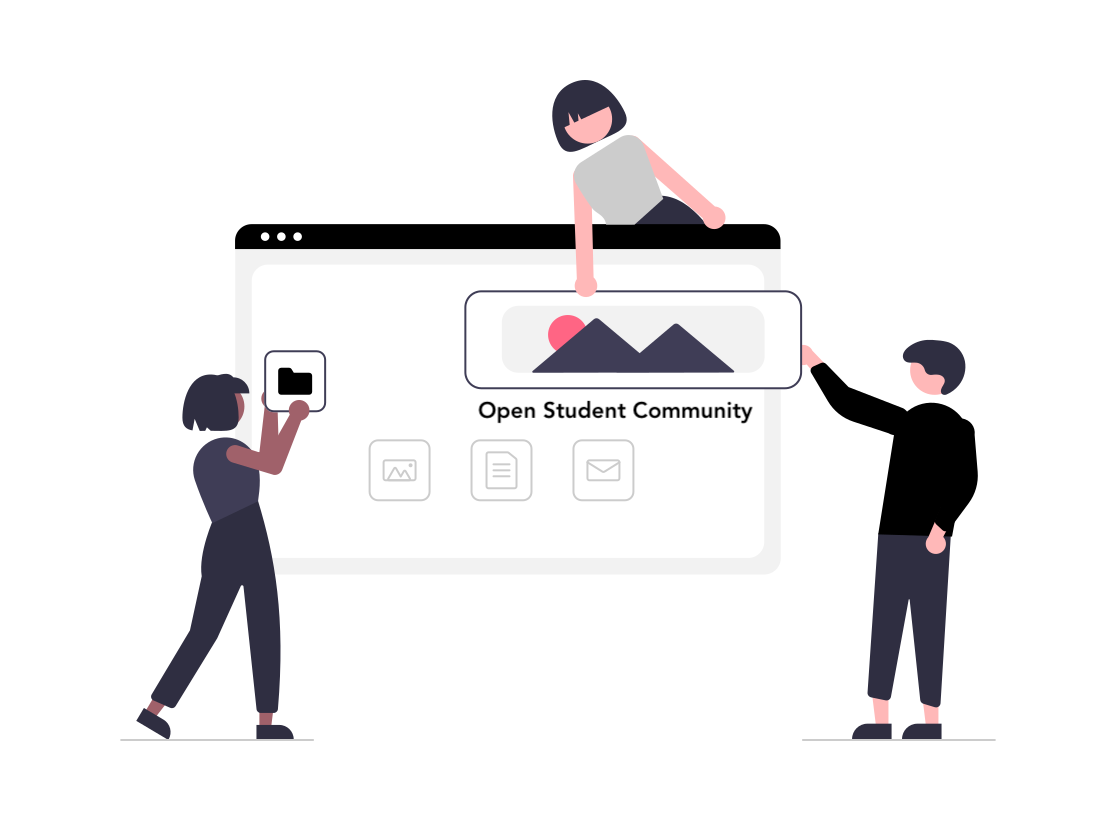Practical Open Source with Open Student Communities
Open communities lie at the heart of open-source practices and are like fuel to the engine that drives open innovation. They are built on the principle of collaboration, which is more often the result of shared interest and vision. These communities could be large and distributed across the globe, or they could be small and local and led by professionals or students.
In this article, we’ll discuss the benefits of open-source communities, students' role in the community, and how to start contributing to open-source.
Benefits of Open-Source
Below are the benefits of joining an open-source community:
- Learning new skills: Joining an open-source community can help you learn new skills that can benefit your career.
- Building a network: You'll get to collaborate with other developers and build a network to help you in your future endeavors.
- Contributing to something meaningful: Contributing to an open-source project can give you a sense of purpose and fulfillment, knowing that your work is helping to solve real-world problems.
- Improving your resume: Contributing to open-source projects can help you stand out in the job market and improve your resume.
- Gaining practical experience: You'll get practical experience working on real projects, which can be helpful in your future career.
How to Join Open-Source Projects
Open-source communities have opened several doors for students to participate. Some examples include:
- Participating in open source programs like Google Summer of Code, Outreachy, etc.
- Getting involved with organizations and communities associated with open source.
- Starting an open-source project and inviting others to contribute to it.
While this list could include various other means, this blog will focus on another great way for students to take their first steps into open source: starting an open student community.
You might also have come across local technical communities. Local technical communities are student groups set up locally (in an organization or an institution). These advocate technologies are associated with tech brands like Microsoft, AWS, and Google Cloud and are shaped in the form of student developer groups.
Now, imagine a community that is completely student-run, where students can learn, collaborate, and contribute to open-source practices. This is what sets the ground for open student communities. Starting such a community could be a great way to get started with open source.
Here’s how you can get started:
The first step is to identify a problem you are passionate about and think of how open source can help solve it. It could be anything from accessibility, data privacy, or open data.
For example, you could start a community that aims at increasing the adoption of open-source practices in your school or university. This could involve conducting workshops and training sessions to help people understand what open source is and how they can get started with it.
It could also be as big as using open-source practices/technologies to solve a real-world problem. It is important to remember that open source is not just about code. It is also about collaboration, community, and culture.
Next up, you should start forming a small team of like-minded students who are passionate about building this community. If your school or university has formal methods to start a new student club, you could benefit from it.
Early members of the team could help in ideating and setting up the team structure, defining responsibilities, and making other early decisions.
The next step is to start planning and building your community. This is where you need to be creative and develop ideas to get people interested in your community. You could start by creating a website or a social media page for your community.

This would help you get the word out and attract people to your work. You could also start by organizing events like meetups, workshops, and hackathons. These would be great platforms for you to engage with people and get them interested in your community.
The most important thing is to get started and to keep going. Open source is all about collaboration and community. So, the more people you have, the better. The key is to keep growing and expanding your community. This is what will help you make a difference. Also, know that there is no one right way to start an open student community. The important thing is to get many people involved.
Your open student community could be the one that:
- Advocates for the use of open source technologies in your school or university.
- Works on projects that use open source to solve social problems.
- Mentors other students and helps them get started with open source.
Being a part of open student communities could be a differentiator in your career, development, and interpersonal skills.
Explore our open-source course:

Conclusion
So, next time you think you have found the right opportunity, go ahead and start your own open student community and build the future you envision with open source.
Our course takes you on a journey from understanding the open-source ecosystem, making your first contribution, and managing your own open-source projects to getting involved in open communities. It will cover open-source concepts but also practical aspects through conversations, demo sections, case studies, and labs where you can test your knowledge.
Our readers are also reading these articles:
- Top 15 DevOps Automation Tools You Should Learn in 2024
- 4 DevOps Metrics You Need To Track Quality And Performance
- 10 Essential DevOps Tools You Should Learn in 2024
- The 10th Annual Open Source Jobs Report
- Open Source Is Not Just About Code. How Can You Contribute?
- Getting Started with Kubernetes: A Beginners Guide
